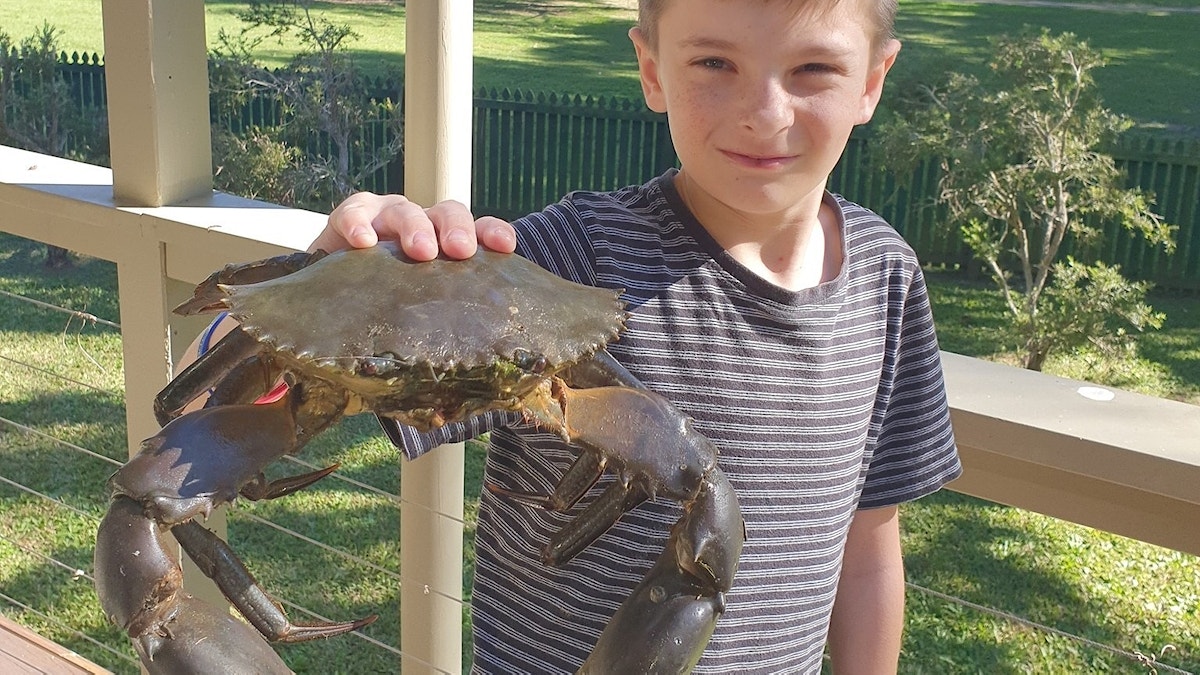
Dr Dazza |Mud Crabs
Published 10:00am 11 November 2022

The mud crab is a Queensland icon. It should be Queensland’s state emblem.
The mud crab is widely distributed through the Indo-Pacific region from South Africa across to Fiji and Samoa and is particularly abundant in Sri Lanka. It has also been introduced to Hawaii and Florida.
In Australia, the geographic range of the mud crab extends from Western Australia across tropical Australia and along the east coast as far south as the Hawkesbury River in New South Wales, although individuals do straggle further south to Bega. The east coast population is part of one of three populations of the species currently recognised within Australian overall.
While mud crabs can be caught all year round, catches are higher in Moreton Bay during the warmer months. They become more inactive and catch rates fall in water temperatures below 20˚C.
Although much of their life cycle is closely associated with mangrove habitats and shallow muddy bays (where most people encounter them), their habitat is much broader and includes offshore waters and seagrass beds.
Adult males can inhabit burrows in intertidal mangrove areas, although they do not permanently live in these burrows and can move from burrow to burrow opportunistically. Small males are rarely found in these burrows and adult females tend to bury in the mud rather than hide in burrows.
Mating activity of mud crabs in Moreton Bay is at a maximum in mid-spring and late summer to early autumn, with spawning activity beginning early in spring and ending in early autumn. Mating can occur only when the female is in a soft-shell condition just after moulting.
A male will carry the female around for the period it takes for her to moult and her shell to re-harden. The mated females move offshore, as the deeper waters provide more chemically and thermally stable environment for egg development and a greater chance of egg dispersal. However, it has not been possible to track the exact movement of egg carrying females to their spawning grounds. Females can produce between two and five million eggs.
Egg development
The planktonic larval stages last about three to four weeks. These then develop into larvae (crablets) which prefer settling in seagrass, possibly because this is the first type of structurally complex habitat that they encounter in shallow waters and affords the tiny animals some immediate protection. Mud crabs are cannibals, and the little ones need protection from their own!
The mud crab is a fast-growing, short-lived species, and populations and catches from year to year are highly variable. Environmental factors such as temperature and rainfall are the key drivers of this variability.
Mud crabs grow in a stepwise fashion as they moult. Mud crabs grow rapidly; in Moreton Bay they grow to 8-10cm carapace width (CW) in their first year, to 13-16cm CW in their second year and up to a maximum of 24cm CW in their third year, although such large animals are rare.
It takes mud crabs in Moreton Bay 18-27 months to reach maturity. Growth is seasonal, with moulting activity most prevalent between September and January. About 50 per cent of males are functionally mature in Moreton Bay at a size of 16.4cm CW.
While the movement of adult male and non-spawning adult female mud crabs is limited, increased freshwater flows can trigger their movements and local dispersal. With a wet weather period predicted over this Spring and Summer, expect to see them active and widely spread out through western Moreton Bay and not just located in close association with mangrove creeks.
Make sure you follow all the rules this summer if you head out to chase mud crabs including using the correct number and size of pots and ensuring that they are properly marked. Let the ladies go and make sure the lads are all over 15cm carapace width.
Dr Dazza is an Associate Professor of Environmental Science at Bond University
Related Stories
Top Stories

Info sessions for North Pine dam
Drop-in community sessions are being held over the next nine days for those wanting more information about Seqwater’s dam improvement program.


Popular Stories

Moreton Bay artists shine in 2024 Brisbane Portrait Prize
Four Moreton Bay artists are among the 64 finalists chosen from almost 600 entries in this year’s Brisbane Portrait Prize. See their works...

'Priority' given for Waraba plans
Waraba, formerly known as Caboolture West, will be the 36th Priority Development Area in Queensland, unlocking land for 30,000 new homes and an estimated 70,000 new residents.

Trai Fuller: ‘It’s always felt like home’
Praised by Wayne Bennett for his courageous style of play and loved by long-time Dolphins fans, Trai Fuller has locked in a two-year deal with the club he calls home. He tells us why it means so much to him













